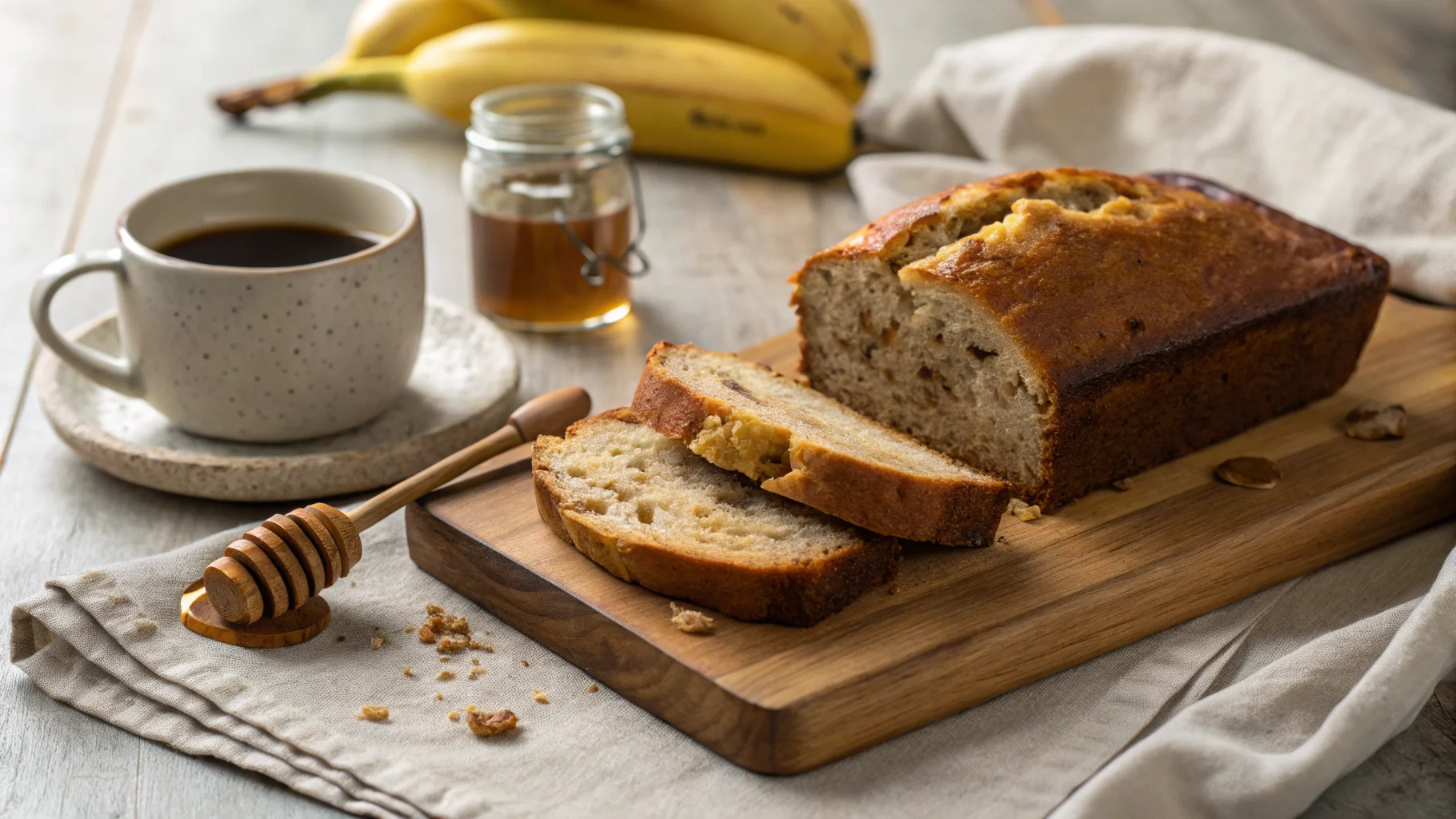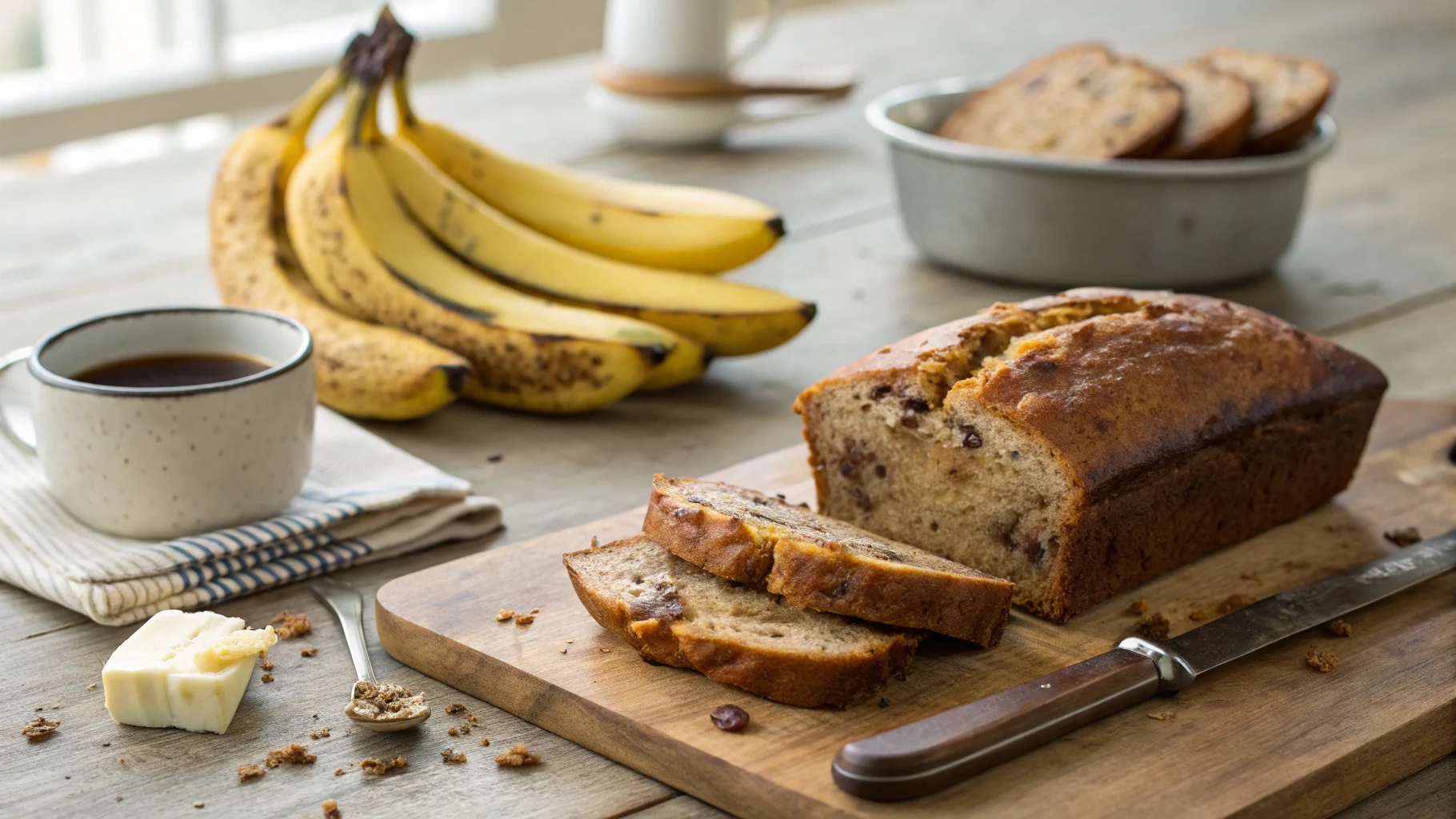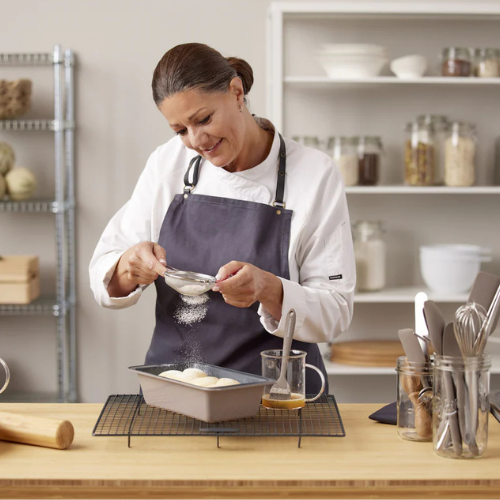Few dishes offer the same level of comfort and warmth as chicken noodle soup. Whether it’s a homemade recipe passed down through generations or a quick fix from a restaurant, this soup is a staple in many households. Packed with tender chicken, hearty noodles, and a flavorful broth, it’s a go-to meal for both nourishment and nostalgia.
A Brief History of Chicken Noodle Soup
Origins and Cultural Significance
The history of Comfort food recipes dates back thousands of years. Many cultures have their own versions of chicken soup, often used as a healing remedy. In ancient China, medicinal broths were believed to boost energy and strengthen the immune system. Similarly, Jewish communities have long cherished “Jewish penicillin,” a homemade chicken soup known for its comforting properties.
During the Middle Ages, chicken soup became more popular in Europe. Since chickens were relatively easy to raise, they provided a reliable source of protein. Over time, as pasta-making techniques spread across regions, noodles were added to the dish, creating the classic combination we know today.
Across cultures, chicken noodle soup is more than just a meal. In many families, it’s a symbol of warmth and care, often served when someone is feeling under the weather. Whether it’s Italian brodo, Mexican caldo de pollo, or Thai chicken noodle soup, this dish has evolved into a global favorite.
Chicken Noodle Soup in Modern Cuisine
Today, chicken noodle soup remains a beloved comfort food, but it has also adapted to modern cooking trends. While traditional homemade recipes still hold a special place, many variations have emerged to cater to different dietary preferences. Gluten-free noodles, plant-based broths, and spicy infusions are just a few examples of how people customize their bowls.
Restaurants and fast-food chains have also embraced chicken noodle soup. From upscale bistros serving gourmet versions with truffle oil to casual diners offering classic homestyle bowls, it’s a menu staple. Additionally, brands like Campbell’s have made it a pantry essential, providing quick and convenient options for busy lifestyles.
Beyond the kitchen, chicken noodle soup has cemented its place in pop culture. The phrase “soup for the soul” is often associated with warmth and well-being, and even books like Chicken Soup for the Soul use the metaphor to convey comfort and inspiration.
Crafting the Perfect at Home
Essential Ingredients
The key to a great bowl of chicken noodle soup lies in the ingredients. Each component plays a vital role in creating the perfect balance of flavors and textures.
- Chicken – The backbone of the soup, chicken provides protein and depth. Bone-in cuts, such as thighs or a whole chicken, yield the richest broth.
- Noodles – Egg noodles are the traditional choice, but other options like rice noodles or whole wheat pasta can be used based on preference.
- Broth – A homemade broth made by simmering chicken bones, aromatics, and spices results in a deeper, more robust flavor. Store-bought broth works in a pinch but lacks the same depth.
- Vegetables – Classic options include carrots, celery, and onions. These ingredients add natural sweetness and texture to the soup.
- Herbs and Spices – Parsley, thyme, and bay leaves enhance the broth’s aroma. A pinch of black pepper and garlic rounds out the flavor profile.
- Salt and Seasoning – Proper seasoning is crucial. Many homemade soups fall flat due to under-salting, so tasting and adjusting throughout cooking is key.
Step-by-Step Cooking Instructions
Making chicken noodle soup from scratch may seem time-consuming, but the process is straightforward. The result is a homemade dish that’s far superior to store-bought versions.
1. Prepare the Broth
- If using a whole chicken or bone-in cuts, place them in a large pot. Add water, onions, carrots, celery, and bay leaves.
- Bring to a boil, then reduce to a simmer. Allow the broth to cook for at least 1.5 to 2 hours, skimming any impurities from the surface.
- Strain the broth, removing the bones and vegetables. Shred the cooked chicken and set it aside.
2. Cook the Vegetables
- In a separate pot, sauté diced onions, carrots, and celery in a little oil or butter until softened.
- Pour the strained broth into the pot and bring to a gentle simmer.
3. Add the Noodles and Chicken
- Add egg noodles to the broth and cook until tender (typically 6–8 minutes).
- Return the shredded chicken to the pot and season with salt, pepper, and herbs.
4. Final Touches
- Stir in fresh parsley for a burst of color and freshness.
- Adjust seasoning to taste and serve hot.
Common Mistakes to Avoid
Even though chicken noodle soup is simple to make, there are a few common mistakes that can affect the final result.
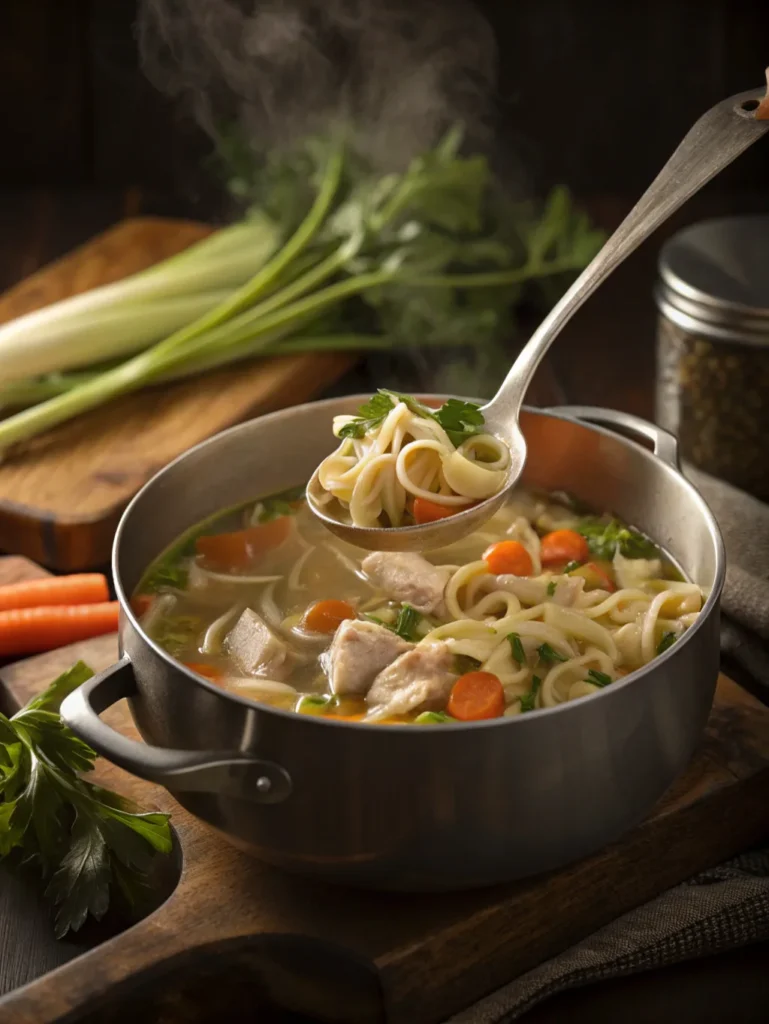
Overcooking the Noodles
One of the most frequent errors is adding noodles too early. Overcooked noodles become mushy and absorb too much broth. A good tip is to cook the noodles separately and add them to each serving just before eating.
Under-seasoning the Broth
A bland broth can make the soup taste dull. Since homemade broth doesn’t have the high sodium content of store-bought versions, it’s important to taste and adjust seasoning throughout cooking. Adding a small splash of soy sauce or a pinch of salt at the end can enhance the flavors.
Using Boneless, Skinless Chicken Too Soon
While boneless chicken can be convenient, it doesn’t produce the same deep flavor as bone-in cuts. Cooking with skin-on, bone-in pieces and removing them later ensures a richer broth.
Skipping the Aromatics
Garlic, onions, and herbs add complexity to chicken noodle soup. Without them, the broth can taste flat. Simmering these ingredients together enhances the soup’s overall depth.
Rushing the Cooking Process
Great chicken noodle soup takes time. Simmering the broth for at least an hour allows the flavors to develop properly. If time is short, using a pressure cooker can speed up the process while still delivering great results.
This guide covers everything you need to know about chicken noodle soup, from its history to perfecting a homemade version. With the right ingredients, careful cooking techniques, and attention to detail, anyone can make a comforting and flavorful bowl. Whether enjoyed on a chilly evening or served as a soothing meal, chicken noodle soup continues to be a favorite in kitchens worldwide.
Variations and Twists on the Classic Chicken Noodle Soup
While the traditional chicken noodle soup recipe is a favorite, there are countless ways to give it a unique twist. Different cultures have put their own spin on this comforting dish, and modern adaptations make it more accessible for various dietary needs. Whether you want to explore international flavors, adjust the recipe for health reasons, or experiment with bold ingredients, there are endless possibilities to make chicken noodle soup your own.
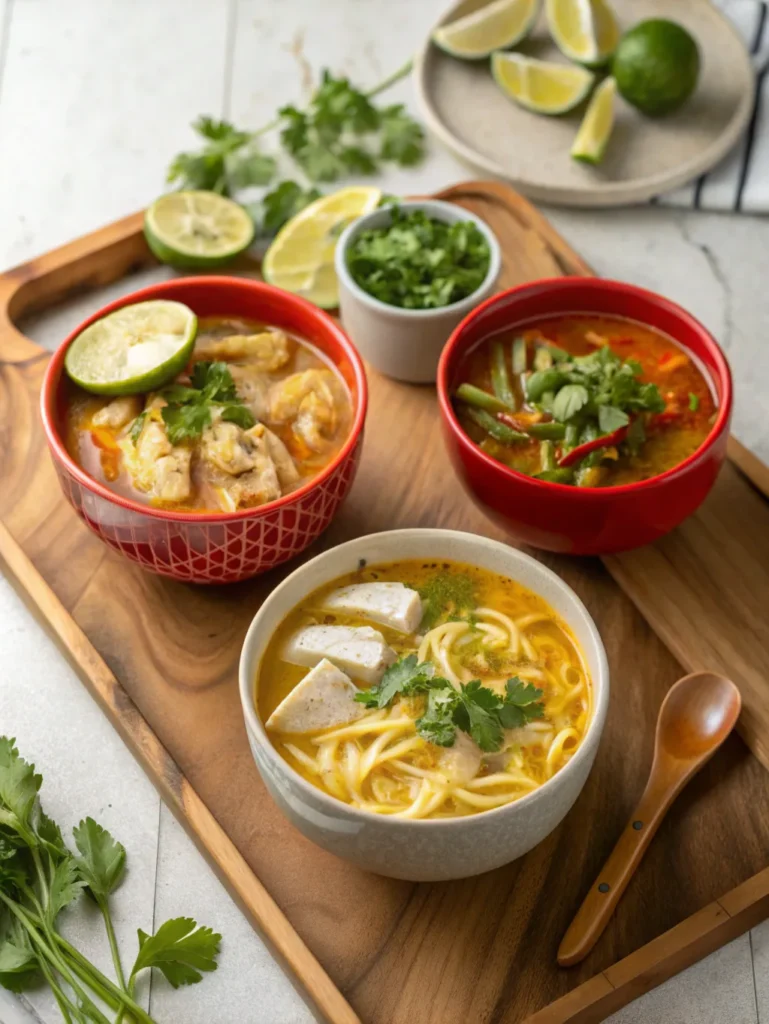
International Takes on Chicken Noodle Soup
Across the world, chicken noodle soup takes many forms. Though the core elements remain the same—chicken, noodles, and broth—each culture adds its own flavors and ingredients.
Indonesia: Soto Ayam
Soto Ayam is Indonesia’s take on chicken noodle soup, but it features a vibrant, spiced broth. Unlike the classic American version, this soup includes:
- Turmeric, which gives it a bright yellow color
- Hard-boiled eggs for extra protein
- Kaffir lime leaves and lemongrass for a citrusy, aromatic broth
- Vermicelli noodles instead of egg noodles
The broth is typically made by simmering chicken with garlic, shallots, ginger, and spices like coriander and cumin. Before serving, fresh herbs, lime juice, and fried shallots are added for a final layer of flavor.
Italy: Cappelletti in Brodo
In Italy, chicken noodle soup takes a more elegant form. Cappelletti in Brodo is a comforting dish made with:
- Small, stuffed pasta (cappelletti) filled with chicken or cheese
- A rich, slow-simmered broth made with whole chicken and root vegetables
- A finishing touch of Parmesan cheese for depth of flavor
Unlike classic chicken noodle soup, which uses loose noodles, the cappelletti pasta adds a hearty, filling element. This dish is often served during the holidays, making it a special occasion favorite.
Thailand: Khao Soi
Khao Soi, a Thai-inspired chicken noodle soup, is bold and creamy. The broth stands out because it combines:
- Coconut milk for a rich, slightly sweet base
- Red curry paste for a spicy kick
- Crispy fried noodles as a garnish for added texture
This dish balances heat, creaminess, and acidity, often topped with lime wedges, pickled mustard greens, and fresh cilantro.
Each of these international versions offers a fresh take on chicken noodle soup, proving that this dish is endlessly adaptable.
Dietary Modifications
For those with dietary restrictions, chicken noodle soup can be easily adjusted to suit different needs. From gluten-free options to plant-based alternatives, there are many ways to modify the recipe without sacrificing flavor.
Gluten-Free Chicken Noodle Soup
Since traditional egg noodles contain wheat, switching to a gluten-free option ensures the soup is safe for those with gluten sensitivities. Some excellent replacements include:
- Rice noodles, commonly used in Asian soups
- Chickpea or lentil pasta, which adds extra protein
- Zucchini noodles (zoodles) for a low-carb alternative
It’s also important to check that store-bought broth is gluten-free, as some brands contain additives with gluten.
Low-Sodium Version
Many packaged broths are high in sodium, which can make chicken noodle soup less healthy for those watching their salt intake. To reduce sodium:
- Use homemade broth and control the salt levels
- Rely on herbs and spices like garlic, thyme, and bay leaves for extra flavor
- Add a splash of lemon juice instead of salt to brighten the taste
Dairy-Free and Vegan Alternatives
A dairy-free chicken noodle soup is easy to achieve since the classic recipe typically contains no dairy. However, for a completely plant-based version, try the following swaps:
- Replace chicken with jackfruit, which mimics shredded chicken’s texture
- Use mushrooms or tofu for an umami-rich broth
- Choose vegetable broth instead of chicken broth
- Swap egg noodles for rice or chickpea noodles
Adding coconut milk can also create a creamy, dairy-free broth without changing the soup’s core flavors.
These dietary modifications allow anyone to enjoy chicken noodle soup while maintaining their personal health needs.
Creative Additions
Adding unexpected ingredients can transform a basic bowl of chicken noodle soup into something truly special. By incorporating new flavors and textures, you can create a soup that stands out.
Flavor Boosters
To take the broth to the next level, consider adding:
- Ginger and turmeric – Both ingredients enhance the broth with warmth and have anti-inflammatory benefits
- Lemongrass – Adds a citrusy brightness, often used in Southeast Asian soups
- Miso paste – A fermented soybean paste that creates an umami depth
- Coconut milk – Introduces a creamy, slightly sweet element
Each of these ingredients can be added during the simmering process to infuse the broth with bold, layered flavors.
Alternative Noodles
Traditional egg noodles are classic, but switching things up can add variety. Some interesting substitutions include:
- Soba noodles – Made from buckwheat, these add a nutty flavor
- Ramen noodles – Soft and chewy, these make the soup feel heartier
- Glass noodles – A lighter option made from mung bean starch
Trying different noodles can change the texture of chicken noodle soup, making each bowl feel unique.
Protein Variations
Chicken is the star of chicken noodle soup, but swapping proteins can create a fresh twist. Some great alternatives include:
- Shrimp – Works well in a seafood-inspired broth
- Turkey – A great option for using Thanksgiving leftovers
- Lentils – A plant-based protein that adds a hearty texture
By mixing and matching ingredients, you can create a custom version of chicken noodle soup that fits your preferences.
Final Thoughts
There’s no single way to make Comfort food recipes. Whether you explore international versions, adjust the recipe for dietary needs, or experiment with bold flavors, there are endless possibilities. By making a few small changes, you can turn a familiar classic into a completely new experience.
No matter which variation you choose, the comforting warmth of chicken noodle soup remains the same.
Frequently Asked Questions (FAQs)
Chicken noodle soup is a comforting dish enjoyed by many, but people often have questions about how to make, store, and enhance it. Below are answers to some of the most common questions to help you create the best bowl of soup every time.
What Are the Best Noodles to Use in Chicken Noodle Soup?
Choosing the right noodles can make a big difference in texture and flavor. Traditional egg noodles are the most common choice, but there are many alternatives to suit different preferences.
- Egg noodles – These are soft, slightly chewy, and absorb broth well without breaking apart.
- Rice noodles – A great gluten-free option that gives the soup a lighter texture.
- Whole wheat pasta – Adds extra fiber and a heartier texture to the dish.
- Soba noodles – Made from buckwheat, they bring a slightly nutty flavor to the soup.
- Zucchini noodles (zoodles) – A low-carb alternative that keeps the soup light and fresh.
When selecting noodles, consider how long they will sit in the broth. Some types, like rice noodles, can become too soft if left in liquid for too long.
Can I Make Chicken Noodle Soup in Advance?
Yes, chicken noodle soup is perfect for meal prep, but a few storage tricks help maintain its quality.
- Store broth and noodles separately – If possible, keep cooked noodles in a different container to prevent them from becoming soggy.
- Refrigerate properly – Allow the soup to cool completely before transferring it to an airtight container. It can be stored in the fridge for up to 4 days.
- Reheat gently – Warm the soup over medium heat to avoid overcooking the chicken or noodles. If the broth has thickened, add a splash of water or stock while reheating.
By following these steps, you can make a large batch of soup and enjoy it throughout the week without compromising texture or taste.
How Can I Add More Depth of Flavor to My Broth?
A rich, flavorful broth is the key to a great Comfort food recipes If your broth tastes bland, there are several ways to boost its depth.
- Roast the bones first – Roasting chicken bones in the oven before simmering them creates a deeper, more robust broth.
- Use aromatics generously – Garlic, onions, celery, and carrots add natural sweetness and complexity.
- Add umami-rich ingredients – Miso paste, soy sauce, or a Parmesan rind can enhance the broth’s savoriness.
- Simmer longer – Allowing the broth to cook for at least 1.5 to 2 hours extracts more flavor from the chicken and bones.
- Finish with acidity – A splash of lemon juice or a dash of vinegar brightens the broth and balances the flavors.
These simple adjustments can take your soup from average to restaurant-quality.
Is It Possible to Freeze Chicken Noodle Soup?
Yes, chicken noodle soup freezes well, but following the right method ensures the best results.
- Freeze the broth separately – If possible, freeze the soup before adding the noodles, as they can become mushy when thawed.
- Use airtight containers – Store the soup in portion-sized airtight containers to prevent freezer burn.
- Label with the date – Frozen soup stays fresh for up to 3 months, but labeling ensures you use it within the best timeframe.
- Thaw properly – Defrost in the refrigerator overnight or reheat directly from frozen over low heat.
For the best texture, cook fresh noodles separately when reheating frozen soup.
What Sides Pair Well With Chicken Noodle Soup?
A bowl of Comfort food recipes is satisfying on its own, but pairing it with the right side dish can make the meal even more enjoyable.
- Crusty bread – A warm baguette or sourdough is perfect for soaking up the broth.
- Grilled cheese sandwich – A comforting side that adds a crispy, cheesy contrast.
- Side salad – A light green salad with a tangy vinaigrette balances the richness of the soup.
- Roasted vegetables – Simple roasted carrots, Brussels sprouts, or sweet potatoes make a nutritious addition.
- Biscuits or cornbread – Soft, buttery baked goods add a hearty element to the meal.
Pairing your soup with the right side dish can elevate it from a simple meal to a full dining experience.
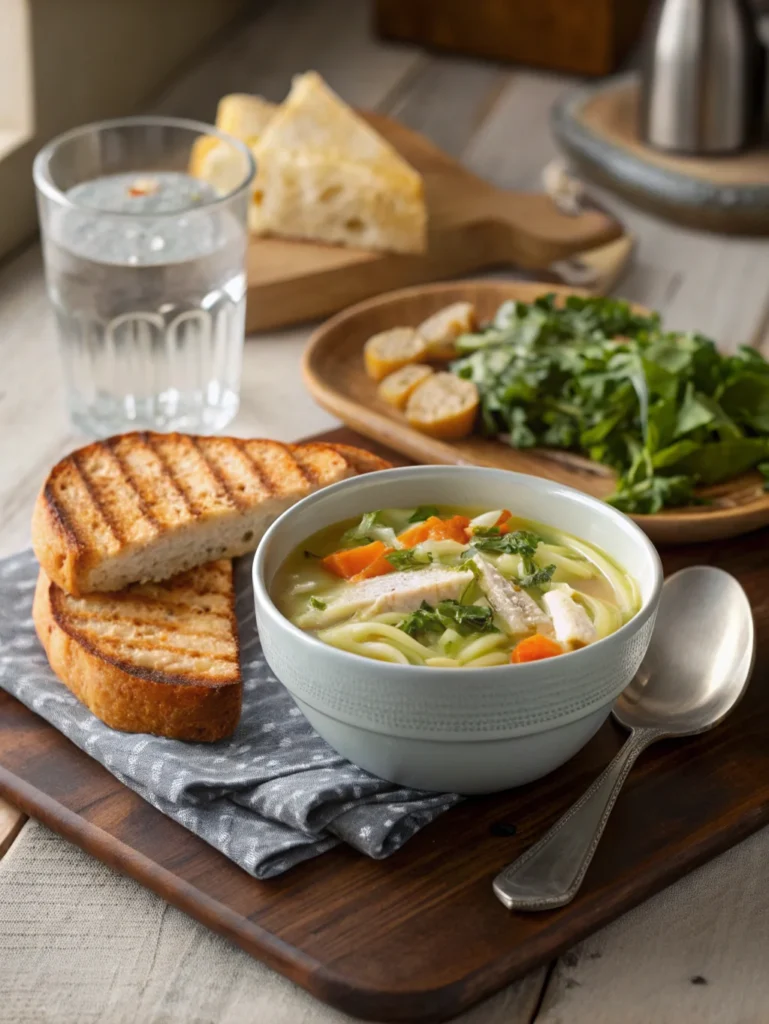
How Do I Prevent Noodles from Becoming Mushy?
Nothing ruins a bowl of Comfort food recipes faster than mushy noodles. Thankfully, there are easy ways to avoid this common problem.
- Cook noodles separately – Instead of boiling noodles directly in the soup, cook them separately and add them just before serving.
- Use heartier noodles – Egg noodles hold up well, but alternatives like whole wheat pasta or soba noodles are even sturdier.
- Undercook slightly – If you must cook the noodles in the soup, remove them when they are just al dente. They will continue softening in the broth.
- Serve immediately – The longer noodles sit in the broth, the more they absorb liquid and break down.
By following these tips, you can enjoy a perfect bowl ofComfort food recipes without dealing with overly soft noodles.
Conclusion
Chicken noodle soup is a timeless dish that continues to bring comfort and nourishment to people of all ages. Whether you are making it from scratch, customizing it to fit dietary needs, or looking for ways to improve its flavor, there is always something new to learn.
With the right techniques, you can create a deeply flavorful broth, choose the best noodles, and store leftovers without losing quality. Whether served on its own or paired with a delicious side, Comfort food recipes remains a go-to meal for every season.
Now that you have all the answers, it’s time to experiment with your own version. Try different noodles, add unique ingredients, and make it a staple in your kitchen.



